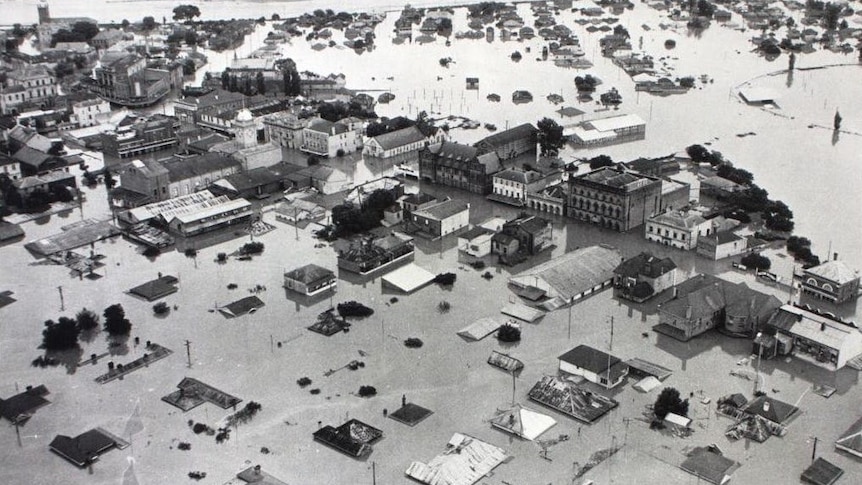Australia Weather News

An aerial photograph of flooded Maitland in February 1955. (Supplied: Maitland City Council)
It was one of Australia's first natural disasters to be broadcast around the world.
Flood expert and former New South Wales State Emergency Service (SES) director general Chas Keys was a boy at the time, watching on from New Zealand.
"Cinesound used to play its news documentaries, I guess you'd say, before movies in cinemas at the time and that happened around the world," he said.
"So Maitland's trials went to New Zealand and Europe and probably America or over the place as news bulletins, and they are very graphic in terms of their detail and the spectacle that they portrayed."The 1955 Hunter Valley flood claimed 14 lives, including 11 in Maitland, destroyed hundreds of homes and businesses and flooded thousands of farms.
About 1,800 people were rescued as the Australian Army moved in, ferrying people to safety and dropping food parcels from the air.
The estimated cost in present-day terms was more than $600 million.
River banks burst
After months of rain, a downpour starting on February 19, 1955 proved too much for the sodden Upper and Lower Hunter Valley catchments.
The downpour became heavier over the coming days.
On the morning of February 24, Singleton's flooding began.
Maitland was next, and the worst hit, with witnesses telling the ABC they heard loud explosions as the Hunter River burst its banks before a torrent of water swept away everything in its path.
Elsewhere was not spared either.
Pumpkins and bloated farm animals were seen floating in Newcastle Harbour.
Living in a hayshed for two weeks
Maurine Osborn was living on a farm at Pitnacree when the banks broke and she became isolated.
The now 93-year-old had a 10-month-old baby and was pregnant with twins at the time.
"We were living in a farmhouse, the water was all around us and we decided it was bedtime anyway and we hopped into bed, and the next thing there was water on the floor," Mrs Osborn said.
"So we jumped out of bed, picked up the mattress and put it on the kitchen table ... and we spent the night on the mattress and the water was bubbling."
They were rescued by a flood boat and eventually taken to a large hay shed.
"We had to climb up a ladder and we were right up the top, on top of the hay, and I think we were there nearly a fortnight," she said.
"We had thrown a bit of food in the boat with us when we went, but the helicopter knew that we had a little baby and they dropped some milk down for the baby.
"But I was lucky because I was still breastfeeding him, and thank god I was."
Mrs Osborn said it had been a horrendous time, seeing so many houses washed away.
SES and flood combat
The disaster was so big, it was a major driver in the formation of the NSW SES.
"It had enormous significance for things like the founding and development of the State Emergency Service, which was founded only weeks after Maitland as the sort of flood combat agency," Mr Keys said.
"There was no agency with the responsibility to manage rescue, evacuation, resupply, property prediction and warnings, so the SES got given the job of managing all of that and leading communities in flood time."
The 1955 flood also led to the construction of the Hunter Valley Flood Mitigation Scheme.
It is a labyrinth of 170 kilometres of levees and flood control structures, designed to stop a repeat of the 1955 flood.
ABC